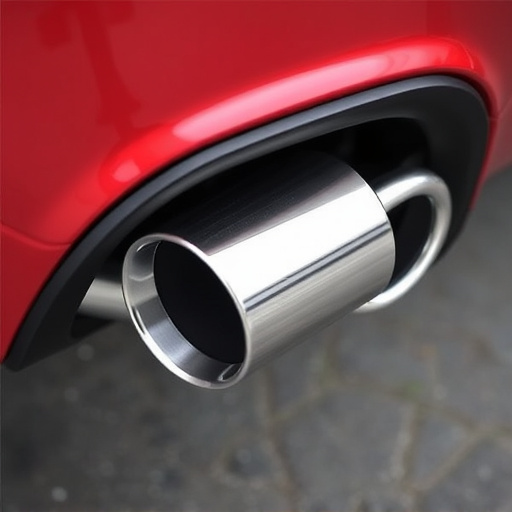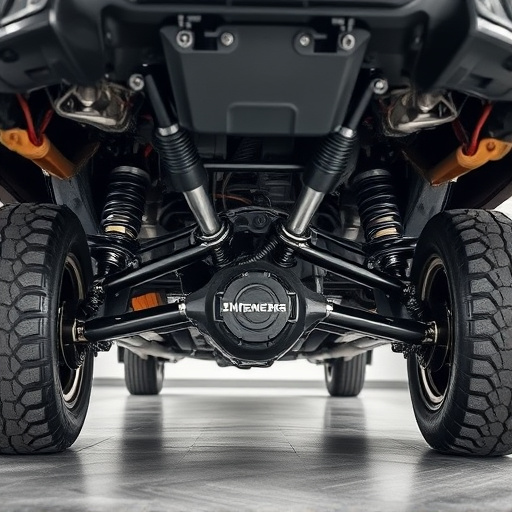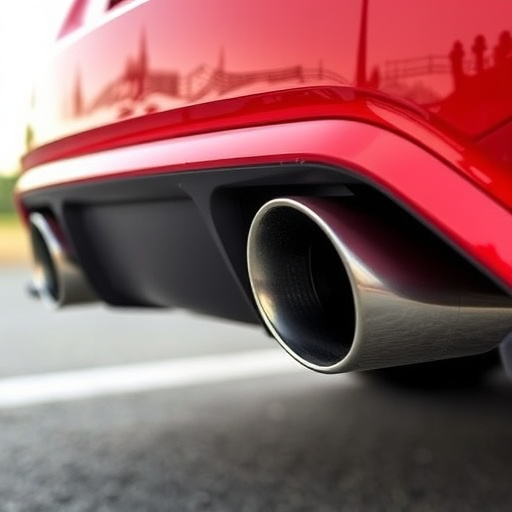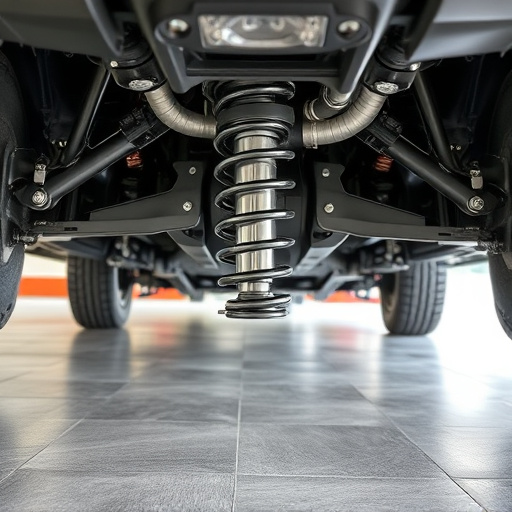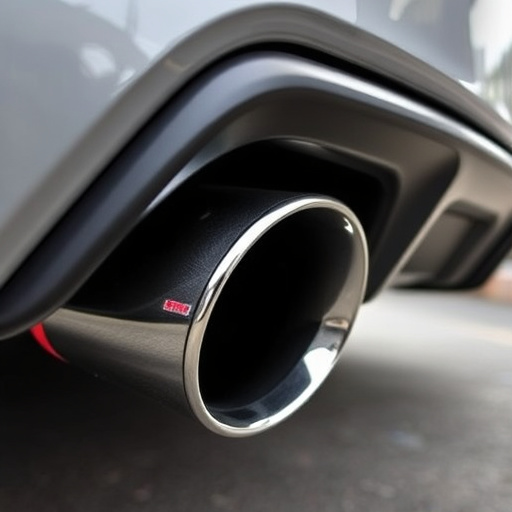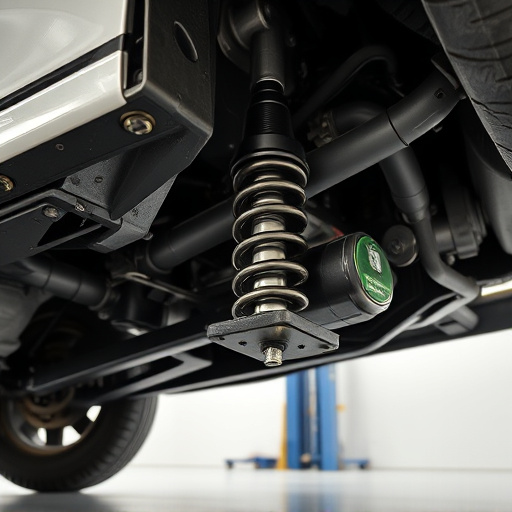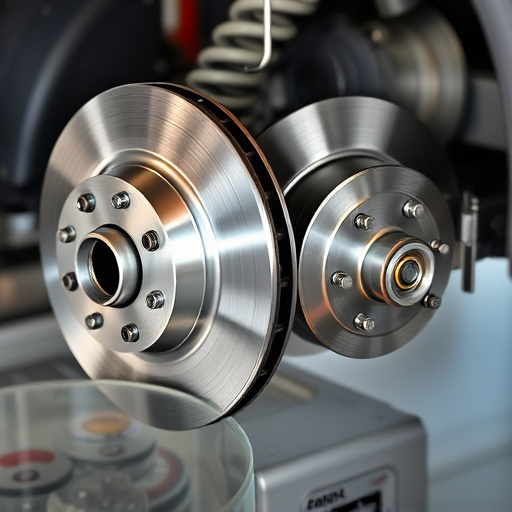The turbocharger system is a powerful engine performance enhancer that boosts cylinder pressure and load using a turbine and compressor. The turbine utilizes exhaust gases to drive the compressor, forcing cold air into the engine for increased oxygen availability and higher power output. Known for its swift response and instant torque, it operates efficiently without drawing extra energy from the engine, improving fuel economy. Modern upgrades like cold air intakes enhance performance further, but also require heightened durability and maintenance considerations for critical components. The turbocharger system significantly improves performance, efficiency, and power output by forcing more air into combustion chambers, enabling better fuel burning and increased cylinder pressure.
“Unleashing enhanced performance and power output, the turbocharger system has become a pivotal technology in modern engines. This article delves into the intricate workings of this component, focusing on its direct impact on cylinder pressure and engine load. We explore how the turbocharger manipulates air intake, boosting compression and resulting in increased inches of water column—a key measure of pressure. Furthermore, we analyze its role in optimizing engine efficiency, showcasing its ability to deliver both performance and efficiency.”
- Understanding Turbocharger System Basics: How It Works
- The Direct Impact on Cylinder Pressure: Inches of Water Column and Boost
- Enhancing Engine Load: Efficiency, Performance, and Power Output
Understanding Turbocharger System Basics: How It Works
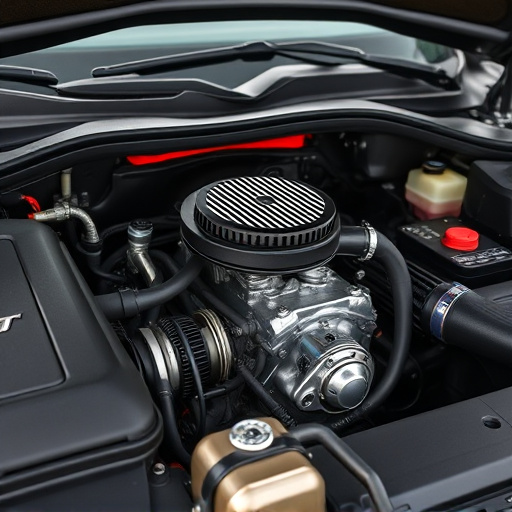
A turbocharger system is a powerful tool that enhances engine performance by increasing cylinder pressure and load. At its core, this system consists of two main components: a turbine and a compressor. The turbine spins off exhaust gases, which drives the compressor to force more cold air into the engine. This process significantly boosts the amount of oxygen available for combustion, leading to a higher power output.
The turbocharger’s ability to quickly respond to changes in engine load makes it particularly effective. When the driver demands more power, the turbocharger immediately increases pressure, providing a burst of speed and torque. Unlike superchargers, which rely on an engine-driven belt or gear system, turbos are more efficient as they don’t require additional energy from the engine to operate, thereby improving overall fuel efficiency. This mechanism also contributes to its reliability, especially when combined with modern suspension components and performance brakes, and can be further enhanced by upgrades like cold air intakes.
The Direct Impact on Cylinder Pressure: Inches of Water Column and Boost
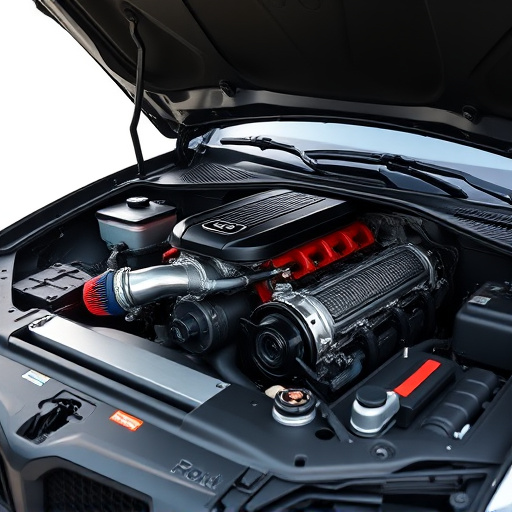
The turbocharger system directly influences cylinder pressure, a key factor in overall vehicle performance. By forcing more air into the engine’s combustion chamber, the turbo increases the pressure, leading to higher power outputs. This effect is measured in inches of water column (inWC) and boost, which refers to the pressure above atmospheric pressure inside the turbocharger.
The boost generated by a turbocharger system can significantly enhance an engine’s performance. When combined with efficient cold air intakes, the turbo can draw in more oxygen, further increasing combustion efficiency. This not only improves vehicle performance but also places additional stress on components like brake rotors, demanding greater durability and maintenance considerations.
Enhancing Engine Load: Efficiency, Performance, and Power Output
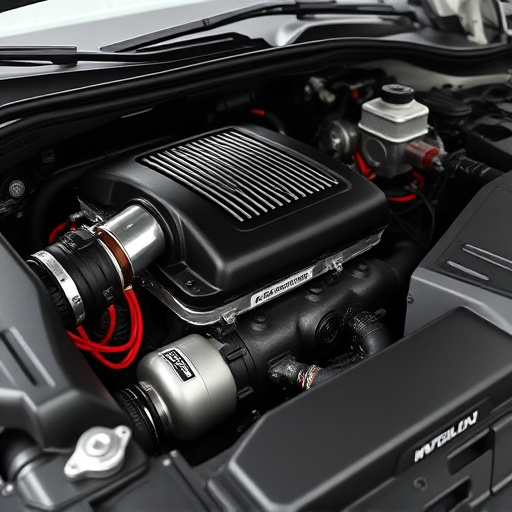
The turbocharger system plays a pivotal role in enhancing engine load, significantly boosting efficiency, performance, and power output. By forcing more air into the combustion chamber, it allows for greater fuel burning, resulting in improved torque delivery at lower RPMs. This direct injection of compressed air not only increases cylinder pressure but also enables the engine to operate within a broader power band. The benefits extend beyond raw power; the turbocharger’s ability to provide instant torque enhances drivability, making acceleration smoother and more responsive.
Moreover, a well-tuned turbocharger system can contribute to better fuel economy by optimizing the air-fuel mixture. Unlike naturally aspirated engines, turbos can maintain high pressure across a wide range of engine speeds, ensuring efficient combustion even under varying load conditions. This is particularly evident in modern vehicles equipped with cat-back exhaust systems and advanced exhaust tips, where the turbocharger manages exhaust flow while enhancing overall engine performance.
In conclusion, the turbocharger system significantly enhances cylinder pressure and engine load by efficiently compressing air, resulting in increased boost. This technology not only improves performance but also boosts power output while maintaining efficiency, making it a critical component in modern automotive engineering for enhanced driving experience.








